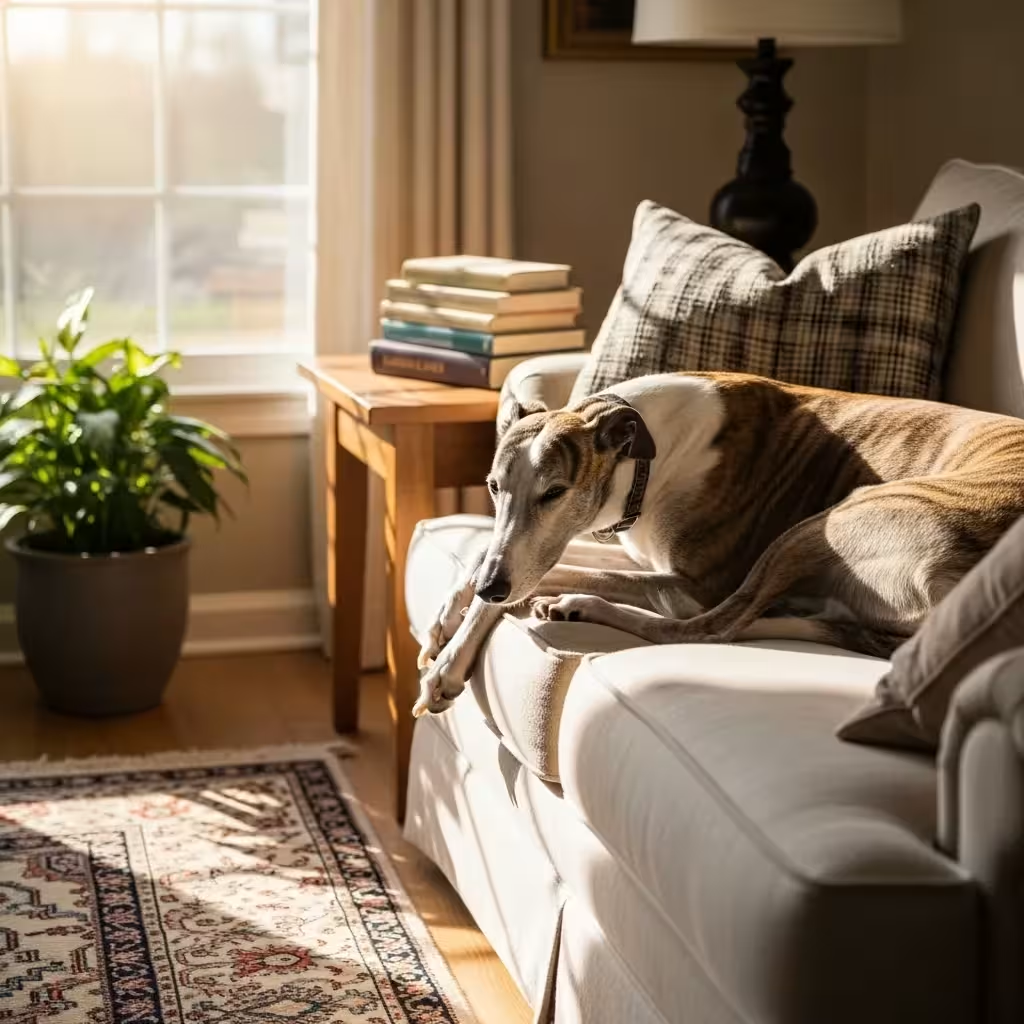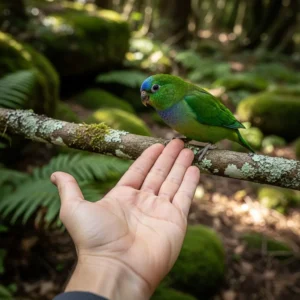
Breed #2: The Greyhound
Known as the “45-mph couch potato,” the Greyhound is a breed of elegant contradictions. Capable of breathtaking speed, they are remarkably calm, gentle, and low-energy in the home. As sighthounds, they were bred for explosive sprints, not endurance, making their exercise needs surprisingly manageable.
Health Profile
Greyhounds are structurally very sound. Their lean, aerodynamic build places minimal stress on their joints, and they have one of the lowest rates of hip dysplasia of any breed. Many Greyhounds available for adoption are retired racers, and reputable adoption groups provide thorough health and temperament evaluations.
Strengths: Exceptionally low incidence of hip and elbow dysplasia. Their lean physique promotes good cardiovascular health.
Potential Issues: They have a higher predisposition to osteosarcoma (bone cancer), a very aggressive cancer. Bloat (GDV) is also a risk. They are known for having poor dental health, which requires diligent care. Additionally, Greyhounds have unique blood parameters and sensitivities to certain anesthetic drugs, a fact your veterinarian must be aware of. Reputable resources like the Greyhound Health & Wellness Program at OSU provide critical information for owners and vets.
Specific Care Needs for a Greyhound
Exercise: A Greyhound’s exercise needs are unique. They require opportunities for short, all-out sprints in a securely fenced area. A tall, sturdy fence is essential, as their speed and high prey drive mean they can be gone in an instant. Outside of these sprints, a couple of 20-30 minute leashed walks per day is typically sufficient. They are not built for long-distance jogging.
Grooming: Their short, smooth coat is incredibly low-maintenance. A weekly wipe-down with a grooming mitt to remove loose hair is usually all that’s needed. However, their skin is thin and can be easily torn or scraped, so care should be taken during play and on hikes.
Nutrition & Weight Management: Keeping a Greyhound at a healthy, lean weight is paramount. It’s normal and healthy to be able to see the faint outline of their last two or three ribs. Owners unfamiliar with the breed often mistakenly overfeed them, which puts undue stress on their delicate frame. A simple way to check is using a Body Condition Score (BCS) chart, which helps you assess fat coverage over the ribs, waist, and abdomen. Your vet can show you how to do this. For a helpful visual guide, the World Small Animal Veterinary Association (WSAVA) provides easy-to-use BCS charts.
Unique Needs: Due to their low body fat, Greyhounds need soft, padded bedding to prevent pressure sores. They are also sensitive to cold and will likely need a coat in chilly weather. Most importantly, their high prey drive means they can never be trusted off-leash in an unfenced area.















